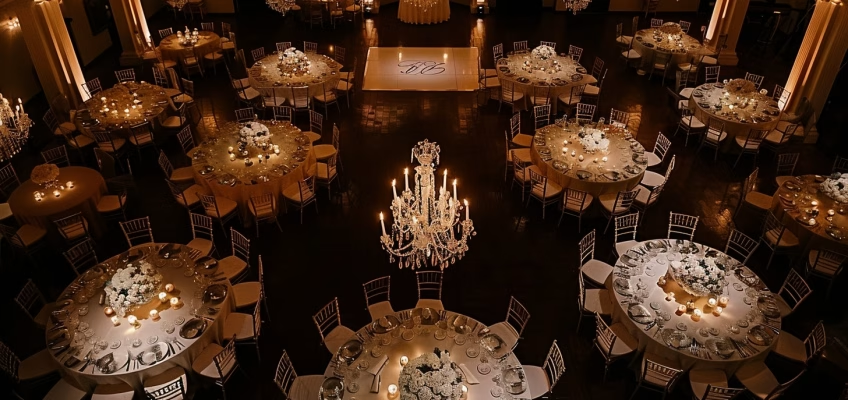Creating a seating chart for your wedding is an important task that helps ensure guests feel comfortable and that the event flows smoothly. Below are tips to help you design an effective and thoughtful seating arrangement.
1. Start Early
- When to Begin: Start working on your seating chart as soon as you have most RSVPs in, ideally 2-3 weeks before the wedding.
- Why It’s Important: It gives you time to make adjustments if more guests RSVP or if you need to consider special accommodations.
2. Consider Your Venue Layout
- Know the Space: Understand the layout of your venue, including table sizes and shapes, the location of key areas like the dance floor, bar, or bathrooms.
- Table Types: Round tables encourage conversation for smaller groups, while long rectangular or banquet tables can create a communal dining experience.
- Important Tables: Ensure key tables, such as the bridal party, family, or VIP guests, are in central or prominent locations.
3. Mix Social Circles, But Be Thoughtful
- Balance Guests: Try to mix guests who know each other with a few who don’t, but be mindful not to make anyone feel uncomfortable. Seat people who may have shared interests or who will get along well.
- Avoid Awkward Pairings: Be sure to avoid seating people who don’t get along together (e.g., exes, estranged family members).
4. Consider Group Dynamics
- Friends: Seat friend groups together so they can enjoy the event and conversation flows naturally.
- Family: Place immediate family near the couple’s table but separate extended family across several tables if needed.
- Couples: Seat couples together unless you know they prefer to socialize separately.
- Kids’ Table: If you have many young guests, consider a kids’ table with activities to keep them entertained, or seat them near their parents.
5. Organize by Relationships
- VIP Guests: Parents, grandparents, and the bridal party should be placed at tables with good views of the couple.
- Friend Groups: Organize tables based on how guests know you, such as college friends, work colleagues, or family friends. This helps guests feel comfortable and ensures easier conversation.
6. Special Considerations for Elderly Guests
- Seating Comfort: Seat elderly guests away from the speakers, the loud dance floor, or any area with a lot of foot traffic.
- Easy Access: Make sure older guests are seated near exits, bathrooms, or pathways for easy accessibility.
7. Designate a Head Table or Sweetheart Table
- Head Table: If you’re having a head table with the bridal party, ensure it’s centrally located, often at the front of the room.
- Sweetheart Table: Some couples prefer a “sweetheart table” for just the two of them, allowing the bridal party and family to sit at their own tables with other guests.
Creating a seating chart that balances personalities, relationships, and practical considerations can be challenging but it is ultimately rewarding.


Leave a Reply